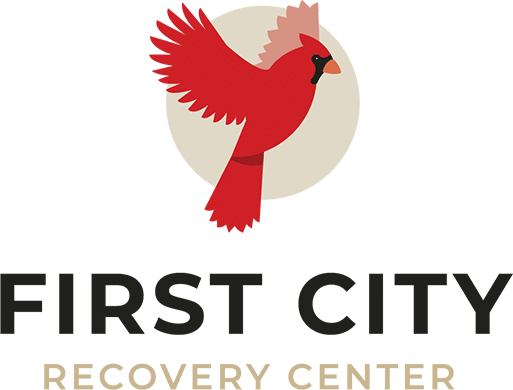Different Types of Mental Health Stigma
Mental health stigma is a pervasive issue that affects individuals on multiple levels, influencing how they perceive themselves, how others perceive them, and the quality of care they receive. Understanding the various forms of stigma is crucial for dismantling the barriers that prevent people from seeking and receiving the mental health support they need. This article explores different types of mental health stigma, their implications, and how we can work together to combat them.
Table of Contents
ToggleUnderstanding Mental Health Stigma
Mental health stigma refers to the negative attitudes, beliefs, and behaviors that are directed towards individuals who have mental health conditions. Stigma can manifest in various ways, including through prejudice, discrimination, and social exclusion. It creates an environment where people with mental health issues are viewed as different, flawed, or even dangerous, which can lead to significant harm.
Stigma is deeply rooted in cultural, social, and historical contexts. It is often perpetuated by misconceptions about mental illness, such as the belief that mental health conditions are a sign of personal weakness or that they are not real medical issues. These misconceptions contribute to the marginalization of those who struggle with mental health, making it more difficult for them to seek help and recover.
Public Stigma: Societal Perceptions and Stereotypes
Public stigma refers to the widespread societal attitudes and stereotypes that contribute to the negative perception of individuals with mental health conditions. This form of stigma is perpetuated by media portrayals, cultural norms, and social interactions that reinforce harmful stereotypes, such as the idea that people with mental health issues are unpredictable, violent, or incapable of leading productive lives.
The impact of public stigma is profound. It can lead to social isolation, as individuals with mental health conditions may be shunned or excluded from community activities. It can also influence public policy, with governments and institutions prioritizing punitive measures over supportive interventions. Public stigma creates a hostile environment that discourages open discussions about mental health, further entrenching the cycle of silence and misunderstanding.
Public Stigma: Societal Perceptions and Stereotypes
Public stigma refers to the widespread societal attitudes and stereotypes that contribute to the negative perception of individuals with mental health conditions. This form of stigma is perpetuated by media portrayals, cultural norms, and social interactions that reinforce harmful stereotypes, such as the idea that people with mental health issues are unpredictable, violent, or incapable of leading productive lives.
The impact of public stigma is profound. It can lead to social isolation, as individuals with mental health conditions may be shunned or excluded from community activities. It can also influence public policy, with governments and institutions prioritizing punitive measures over supportive interventions. Public stigma creates a hostile environment that discourages open discussions about mental health, further entrenching the cycle of silence and misunderstanding.
Self-Stigma: Internalized Negative Beliefs
Self-stigma occurs when individuals with mental health conditions internalize the negative beliefs and stereotypes that are prevalent in society. This internalization can lead to feelings of shame, guilt, and worthlessness, which can exacerbate the symptoms of mental illness and create additional barriers to seeking help.
Self-stigma is particularly damaging because it undermines an individual’s self-esteem and sense of agency. People who experience self-stigma may believe that they are responsible for their condition or that they are not deserving of care and support. This can lead to a reluctance to seek treatment, a tendency to hide symptoms, and a higher risk of developing co-occurring issues like substance abuse.
Structural Stigma: Institutional Barriers and Discrimination
Structural stigma refers to the systemic policies, practices, and norms within institutions that disadvantage individuals with mental health conditions. This form of stigma is often less visible but no less harmful. It includes discriminatory laws, inadequate funding for mental health services, and institutional practices that perpetuate inequality.
For example, in some countries, people with mental health conditions may face legal barriers to employment, housing, and education. They may also encounter difficulties in accessing quality healthcare, as mental health services are often underfunded. Structural stigma can also manifest in the criminal justice system, where individuals with mental health issues are more likely to be incarcerated rather than receiving appropriate treatment.
The impact of structural stigma is far-reaching, as it not only affects individuals but also perpetuates inequalities in society. It creates an environment where mental health is not prioritized, and those who need help the most are often left without the necessary resources and support.
Labeling and Language: The Impact of Words
The words we use to describe mental health conditions can have a significant impact on how individuals are perceived and how they perceive themselves. Labeling refers to the practice of defining someone by their mental health condition, such as calling someone “bipolar” rather than a person with bipolar disorder. This can reduce an individual’s identity to their illness, overshadowing other aspects of who they are.
The language used in discussions about mental health can either contribute to stigma or help to dismantle it. Terms like “crazy,” “insane,” or “lunatic” are often used carelessly, reinforcing negative stereotypes and perpetuating stigma. On the other hand, using person-first language, such as “a person with depression” rather than “a depressed person,” can help to humanize individuals and reduce stigma.
Stigma in Healthcare: Challenges in Seeking Treatment
Stigma within the healthcare system poses significant challenges for individuals seeking treatment for mental health conditions. Healthcare providers may hold prejudiced views about mental illness, which can affect the quality of care that patients receive. For example, symptoms of mental health conditions may be dismissed or minimized, with providers attributing them to character flaws or exaggeration rather than recognizing them as legitimate health concerns.
Stigma in healthcare can also lead to misdiagnosis, delayed treatment, and a lack of appropriate referrals to mental health specialists. In some cases, individuals with mental health conditions may avoid seeking treatment altogether due to fear of judgment or discrimination from healthcare providers.

The consequences of stigma in healthcare are severe, as untreated mental health conditions can lead to a decline in overall well-being and quality of life. It is essential to address stigma within the healthcare system to ensure that all individuals receive the care and support they need.
Stigma in the Workplace: Navigating Professional Environments
Mental health stigma in the workplace can create significant challenges for employees who have mental health conditions. Stigmatizing attitudes from employers or colleagues can lead to discrimination, such as being passed over for promotions, facing unwarranted scrutiny, or being subject to unfair disciplinary actions.
Workplace stigma can also create an environment where employees feel unsafe disclosing their mental health condition, leading them to forgo necessary accommodations or support. This can result in increased stress, burnout, and a decline in job performance, further reinforcing negative stereotypes.
Companies that fail to address mental health stigma may experience higher turnover rates, lower employee engagement, and increased absenteeism. It is crucial for employers to create a supportive and inclusive workplace where mental health is openly discussed and accommodated.
Combating Mental Health Stigma: Strategies and Approaches
Combating mental health stigma requires a multifaceted approach that involves individuals, communities, institutions, and policymakers. Some strategies to reduce stigma include:
- Education and Awareness: Providing accurate information about mental health conditions can help to dispel myths and challenge stereotypes. Public awareness campaigns, mental health education in schools, and community programs can play a key role in changing attitudes.
- Advocacy and Policy Change: Advocating for policy changes that protect the rights of individuals with mental health conditions is crucial. This includes pushing for anti-discrimination laws, increased funding for mental health services, and better integration of mental health care into primary healthcare.
- Supporting Peer Programs: Peer support programs, where individuals with lived experience of mental health conditions provide support to others, can be powerful tools in combating stigma. These programs help to normalize mental health challenges and provide a sense of community and understanding.
- Encouraging Open Dialogue: Creating spaces where people can openly discuss mental health without fear of judgment is essential. This can be achieved through mental health support groups, workplace initiatives, and public forums.
- Promoting Positive Media Representation: The media plays a significant role in shaping public perceptions of mental health. Encouraging accurate and compassionate portrayals of mental health conditions in the media can help to reduce stigma.
Supporting Loved Ones: How to Be an Ally Against Stigma
Supporting a loved one with a mental health condition involves being an active ally in the fight against stigma. Here are some ways to be supportive:
- Listen and Validate: Listening without judgment and validating your loved one’s experiences can help them feel understood and supported. Avoid dismissing their feelings or offering unsolicited advice.
- Educate Yourself: Learn about your loved one’s mental health condition and the challenges they may face. This knowledge can help you provide informed support and challenge any misconceptions you may have.
- Challenge Stigma: Speak out against stigma when you encounter it, whether in conversations, on social media, or in public spaces. Challenging stigmatizing language and attitudes can make a significant difference.
- Encourage Treatment: Support your loved one in seeking treatment if they are comfortable doing so. Offer to help them find resources, accompany them to appointments, or provide emotional support throughout their journey.
- Respect Their Boundaries: It’s important to respect your loved one’s boundaries and autonomy. They may not always want to talk about their mental health, and that’s okay. Let them know you’re there for them when they’re ready.
Seeking Mental Health Treatment at First City Recovery

At First City Recovery, we understand the impact that mental health stigma can have on individuals seeking treatment. Our mission is to provide compassionate, evidence-based care that addresses the unique needs of each person. We offer a range of services, including therapy, medication management, and holistic approaches to mental health care, all within a supportive and stigma-free environment.
If you or a loved one is seeking mental health treatment, contact First City Recovery today to learn more about how we can help.

MD, Psychiatrist
Dr. Vahid Osman, MD is a psychiatry specialist in Indianapolis, IN.
Dr. Osman completed a residency at Austin State Hospital. He has over 32 years of experience in Psychiatry & Behavioral Health. He is board certified by the American Board of Psychiatry and Neurology.




